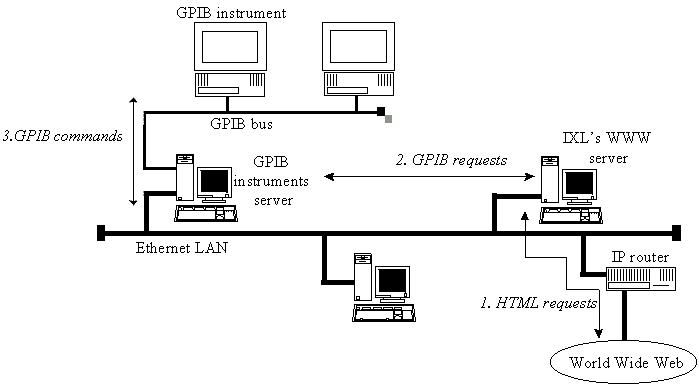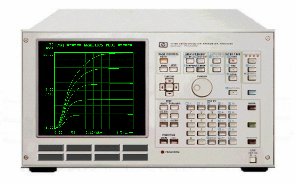A World-Wide-Web Based Instrumentation Pool
AbstractThis paper proposes an original new way for integrating
training of advanced measurement equipment in education at University level. It uses some
of the WWW features such as the ability to have multimedia documents, the simplicity of
the HTML syntax and particularly the Web's networked structure. The basic idea is, that on
the one side there is an instrumentation pool, that means a number of intruments located
anywhere in the world. On the other side a detailed description of the instrument and its
front panel are available on the WEB and can be accessed by any Web browser for a specific
declared usersgroup. This link permits students to learn the use of advanced measurement
equipment, to perform real measurements with instruments not available at the University.
Test of devices and VLSI Systems is a fundamental step in
process development, devices and system characterisation, process monitoring, reliability
investigation and failure analysis. For the electrical test, a certain class of
instruments is widely used, e.g. VLSI characterisation systems, semiconductor parameter
analysers, network analysers, digital oscilloscopes, function generators and spectrum
analysers.
In every lab, advanced instruments are available and often
not used at 100%. Often not all classes of instruments are available. Generally, every
site has its own speciality on a well defined topic like telecommunications, ASICs,
assemblies, VLSI design ... but students should have access to a wide class of instruments
to get the best education. To overcome this drawback, we propose a new concept:
measurements and instruments are geographically separated. On the one side, there is an
instrumentation pool, that means a number of instruments located anywhere in the world,
connected via standard IEEE-488 interface bus to a workstation which is connected to the
Internet. Next the front panel or the mean functions of the instrument are detailed on a
Web Page. The link between the two units permits a specified clas of users to access the
instrumentation pool and to perform measurements.
Figure 1 shows the necessary structure you need to add an instrument to the instrumentation pool.
Figure 1 : WWW virtual instruments implementation
We are presently implementing the system described in figure 1. The instrument used is the well known HP4145 Semiconductor Parameter Analyser. Figure 2 shows the front panel of this instrument.
Figure 2 : HP 4145 Front Panel
This training course is addressed especially to students who need a good practical expertise of advanced industrial equipment in electronics. The task consists of detailed investigation of the functionality, performances and limits of an advanced analysis system for microelectronics fields. The work is supposed to be divide into two phases:
This concept had been applied to our IUP (Institut
Universitaire Professionnalise Genie Electrique et Informatique Industrielle) students for
three years and we have good results. To realise the new proposed concept (geographical
separation of instruments and measurements), all course material will be available on Web.
For instance, case studies are under construction.
The world-wide instrument training pool has many advantages besides these directly related to the handling with microelectronics test environment:
|

